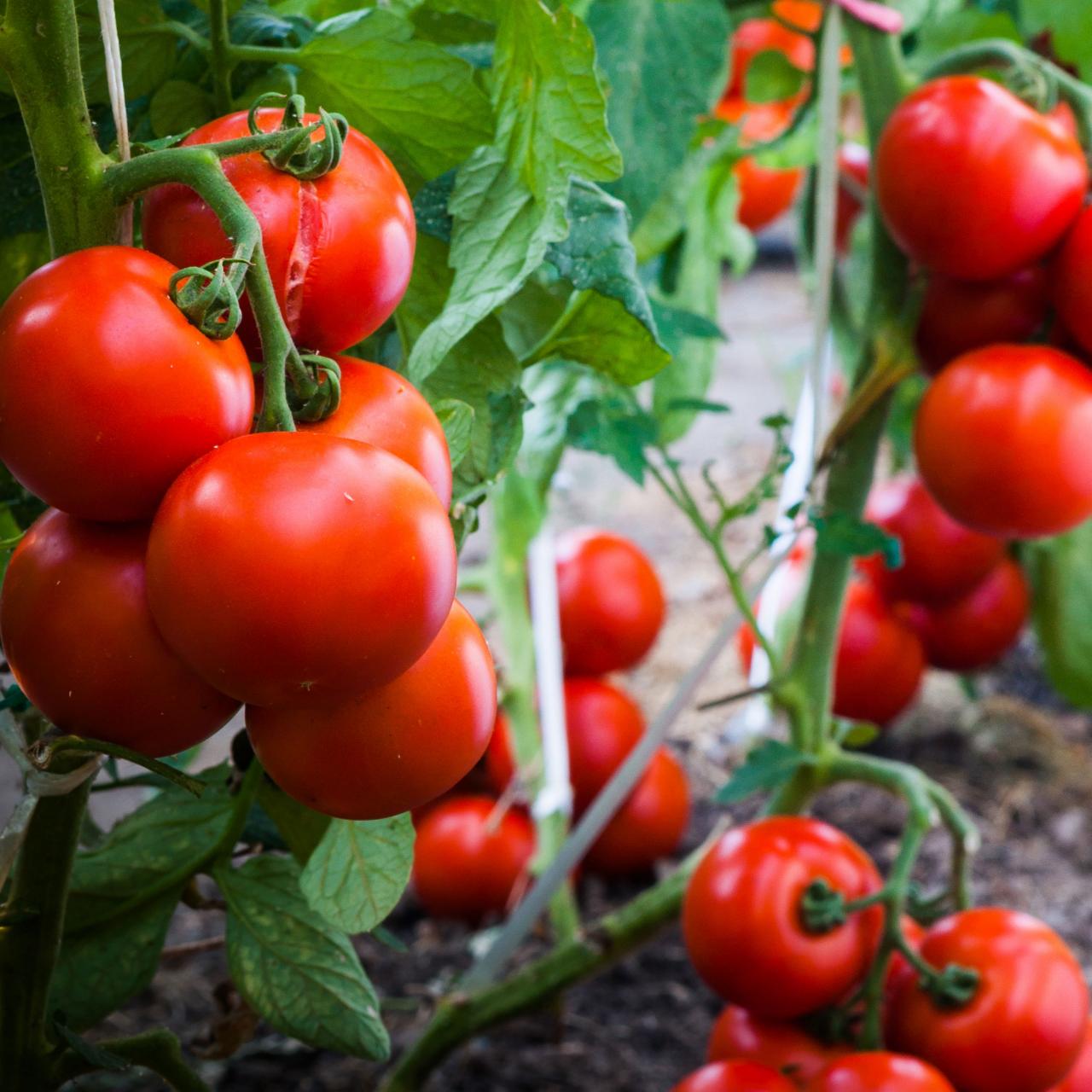Growing tomatoes requires proper spacing; otherwise, the plants could succumb to disease and produce lower yields. If your tomato plants become overcrowded with others too quickly, disease might attack and reduce yields significantly.
Crowded tomato plants restrict airflow and can foster fungal diseases. To keep these from happening, follow these guidelines on optimal plant spacing for tomato varieties: Determinate varieties and full-size indeterminate varieties should be spaced out equally when planting tomatoes.
Optimal Spacing
Tomato plants are known as heavy feeders, needing lots of nitrogen, phosphorus and potassium in order to thrive and produce fruit. Furthermore, tomatoes require airflow for proper airflow circulation to avoid disease, pests and mildew issues. Because each tomato plant needs the appropriate amount of nutrients and air, proper spacing between tomato plants must be achieved to ensure each receives enough air and nutrition; generally this rule of thumb suggests 18-24 inches apart but it will depend on factors like which variety you grow as well as if planting on land, containers or raised beds.
Too closely spaced tomato plants can lead to various issues. For instance, they compete for resources like water and nutrients from the soil which leads to stunted growth and weak, scraggly plants. Furthermore, too closely planted tomato plants become more vulnerable to disease while producing less fruit overall.
Overcrowding can make fruit difficult to access and can reduce yield significantly, while also preventing it from ripening and leading to the possible destruction of an entire crop.
The best way to ensure that your tomato plants are appropriately spaced is to conduct research into the specific variety you are growing and follow any specific recommendations listed on their seed packet or plant tag. Tomato varieties generally fall into two categories: determinate (typically growing to a certain height and stopping), while indeterminate varieties continue to flourish throughout the season and require greater spacing apart.
Other considerations when deciding the optimal spacing for tomato plants include soil quality and type, and how you plan to support them. In general, when planting them directly into the ground without support stakes or cages in place they should be spaced at least 18-24 inches apart while those being staked or caged require at least four-foot spacing between plants.
Growing tomatoes in containers requires much less room than growing them in the ground or raised beds, as each plant takes up less room. While this may tempt gardeners who have limited space, this approach could actually be detrimental to the health of your tomato plants. Tomato plants requiring airflow and sunlight require ample air circulation – too closely spaced tomato plants could prevent sun reaching leaves and fruit fully and lead to various diseases preventing your tomatoes from fully ripening.

Determinate Varieties
Tomato plants generally fall into two broad categories, determinate and indeterminate. This distinction has nothing to do with production; rather it refers to whether the plant grows like a bush (definite) or vine (indeterminate). Determinate varieties tend to produce smaller fruits in bush form. They reach an approximate height between three to four feet before stopping growing – ideal for stocking pantry shelves with canned fresh-picked varieties like Early Girl, Rutgers or San Marzano varieties.
Determinate plants tend to be less vulnerable to disease and have a shorter growing season than indeterminate varieties bred for long vines; however, some gardeners prefer indeterminate tomatoes for their longer harvest periods so that they can enjoy an endless supply of delicious tomatoes throughout the summer.
Determinate plants are ideal for gardeners with limited space who wish to plant tomatoes in rows, as they can be planted more closely together than indeterminate varieties which should be spaced 18-24 inches apart when grown in rows. Tomato varieties bred to be compact or dwarf can even be placed closer, although their production will be restricted. According to P. Allen Smith, determinate varieties produce the greatest number of fruit.
If you plan to stake or plant indeterminate tomatoes so they sprawl across the ground, staking will require more spacing between each plant than usual. According to The Smiths’ suggestions for these varieties and planting methods, 3- to 4-foot spacing between plants should provide them with enough support and room to produce fruit as they mature.
Indeterminate plants left to their own devices require some type of support system such as tomato cages for support. You can find these at most hardware stores, and should place them before your tomato plants begin growing. If using wire cages instead, ensure they can accommodate large clusters as they form and ripen.
Once a tomato plant has reached maturity, it should be pruned regularly in order to direct energy towards producing more fruit. Remove suckers at the base of its main stem as well as leaves over empty clusters on its vine to help control its growth while encouraging further fruit development as well as decreasing disease and rot risk.
Tomato plants are susceptible to several common diseases, including root rot, early blight and black mold. By keeping the planting area free of weeds and monitoring tomato plants regularly for signs of root rot, early blight or black mold infection – which are all caused by organisms called pathogens – keeping your tomato patch weed-free is one way of combatting them and also making pruning more effective by improving airflow through plants while decreasing disease risks. Regular visits from you to inspect these plants as well as pruning will allow them time for any additional pruning needed which will increase airflow throughout and thus decrease disease risk further – this should help improve airflow through plants while also improving airflow within its core to improve airflow through them as this will improve airflow while simultaneously improving airflow throughout their core and thus reduce disease risks in an overall improved plant’s core and reduce disease risks while simultaneously.

